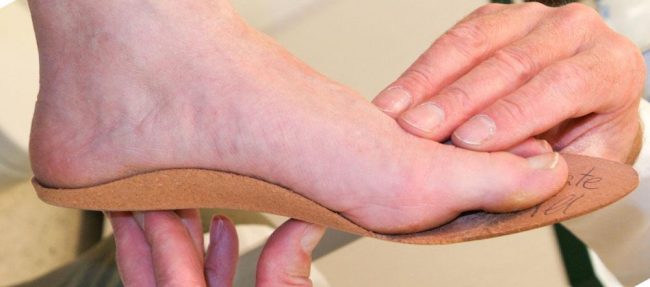
What is the difference between orthotics and insoles?
U.S. Orthotic Center firmly believes that everyone especially athletes should have an insole or orthotic in their footwear. Virtually everyone experiences better comfort and control with insoles. They enable the foot to directly transfer power while greatly enhancing comfort.
Orthotics maintain the natural shock absorbing ability of the arch. Without proper support, people with high or low arches and pronated or supinated feet aren’t getting an optimal balance and foot function.
Orthotics and Insoles: What’s the Difference? The stock insole (aka, sock liner) is the thin, usually flat, insole that comes with most sneaker and some dress shoes (For a list of dress shoes, check out our website https://usorthoticcenter.com/recommended-shoes/). Very few athletic and shoe companies spend much time and effort in improving the quality of these.
Pre-fabricated (over-the-counter or drop-in) insoles are a step up in performance level from the stock insole because they offer a deeper, more defined heel cup and some amount of arch support. Also, pre-fabricated insoles are inexpensive and can serve as a “starter” insole for customers who balk at the cost of a custom product.
Custom orthotics are all constructed from a cast or an impression taken of the foot. The end result is a mirror image of the sole of the foot in plastic, rubber, foam, leather or cork. Custom insoles purchased at retail stores are not medical orthotics and accommodate the natural shape of the foot and help stabilize it for improved comfort and performance. Also, custom insoles don’t attempt to change the biomechanics of the lower extremities. Also, balance is enhanced by supporting the foot in a neutral position for walking. Small changes underfoot can alleviate knee, hip, and back pain
With unposted custom insoles made in retail stores, the impression or “cast shell” is trimmed to fit and placed in the footwear. By matching the plantar surface of the foot, the pressure is better distributed underfoot for improved comfort. The height of the arch flanges and heel cup rim when properly mated with the liner to have a stabilizing effect that’s improved over the stock insole. Unposted insoles sold at stores have a less stabilizing effect than posted insoles made by U.S. Orthotic Center.
With posted custom insoles the hills and valleys beneath the foot are again matched by the shell but the void space underneath is filled in—this fill is called “posting”—which renders the underside of the insole flat. This makes the new platform more stable and alleviates pain. Posting materials and methods can be varied to construct more compliant depending on the patient’s needs.
Medical orthotics like the ones made by U.S. Orthotic Center are used to treat a medical condition. The qualified technician, places and holds the foot in a prescribed position during the casting procedure to mirror the foot in its corrected, aligned position. The new orthotic will keep the foot stable through its entire range of motion during gait and changes biomechanics. Often, the corrective posting is used to effect a change to the biomechanics of the foot through the gait cycle accordingly.
Custom orthotics are a long-term investment and customers should be made aware that they can usually be removed from old shoes and installed in new ones. Sports Orthotics generally last for 2-4 years, while dress orthotics tend to last for 6-8 years.